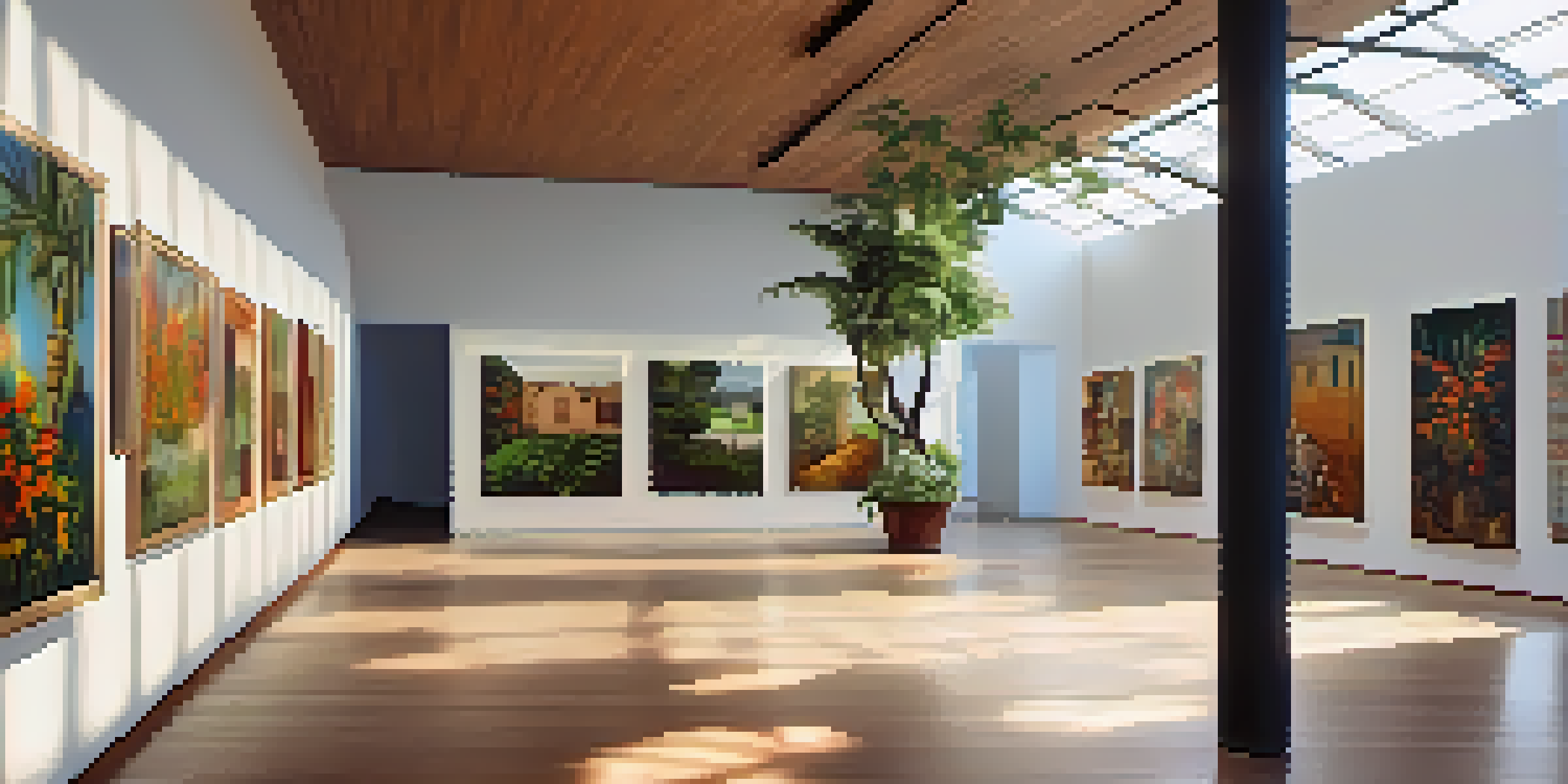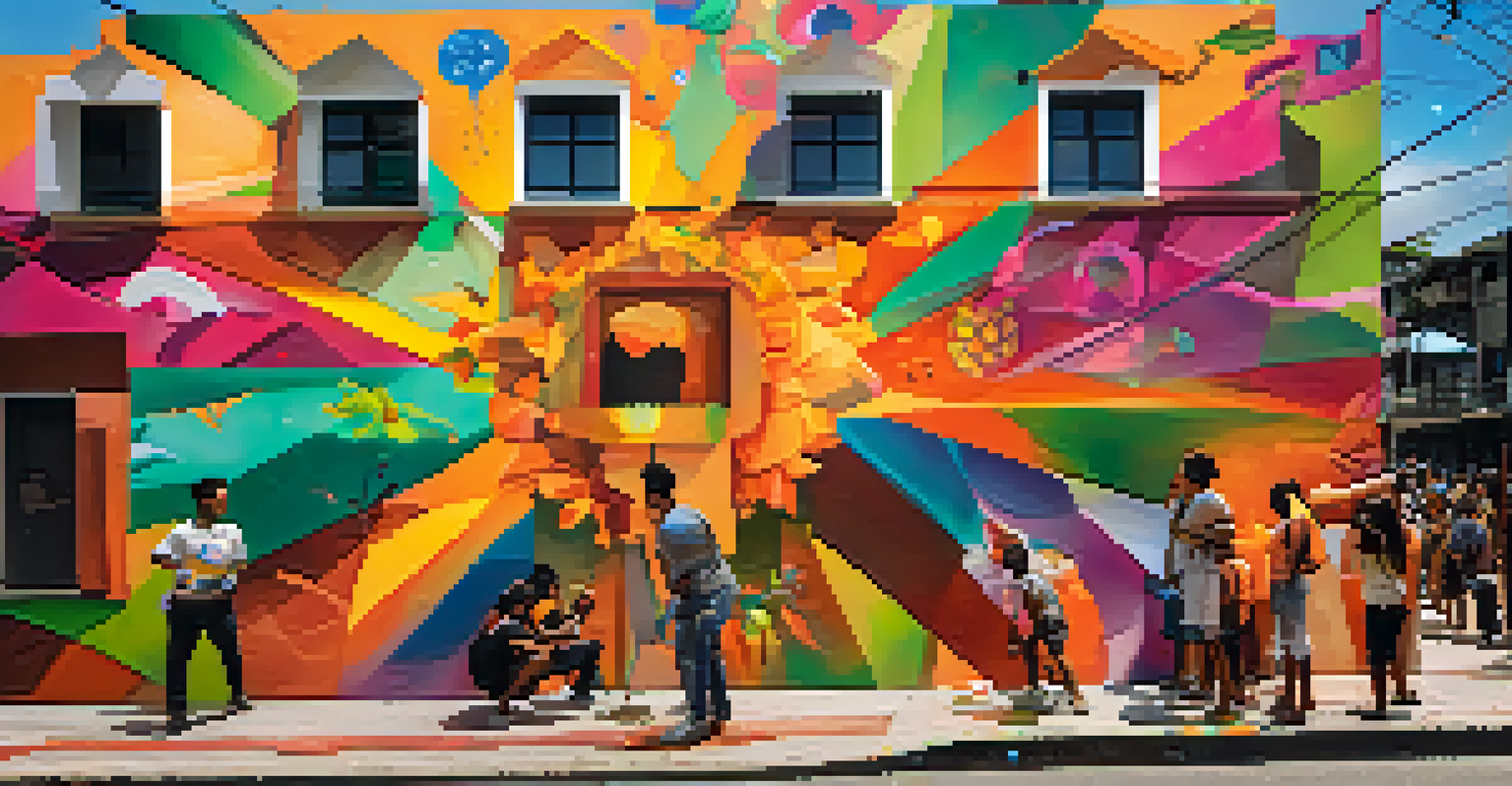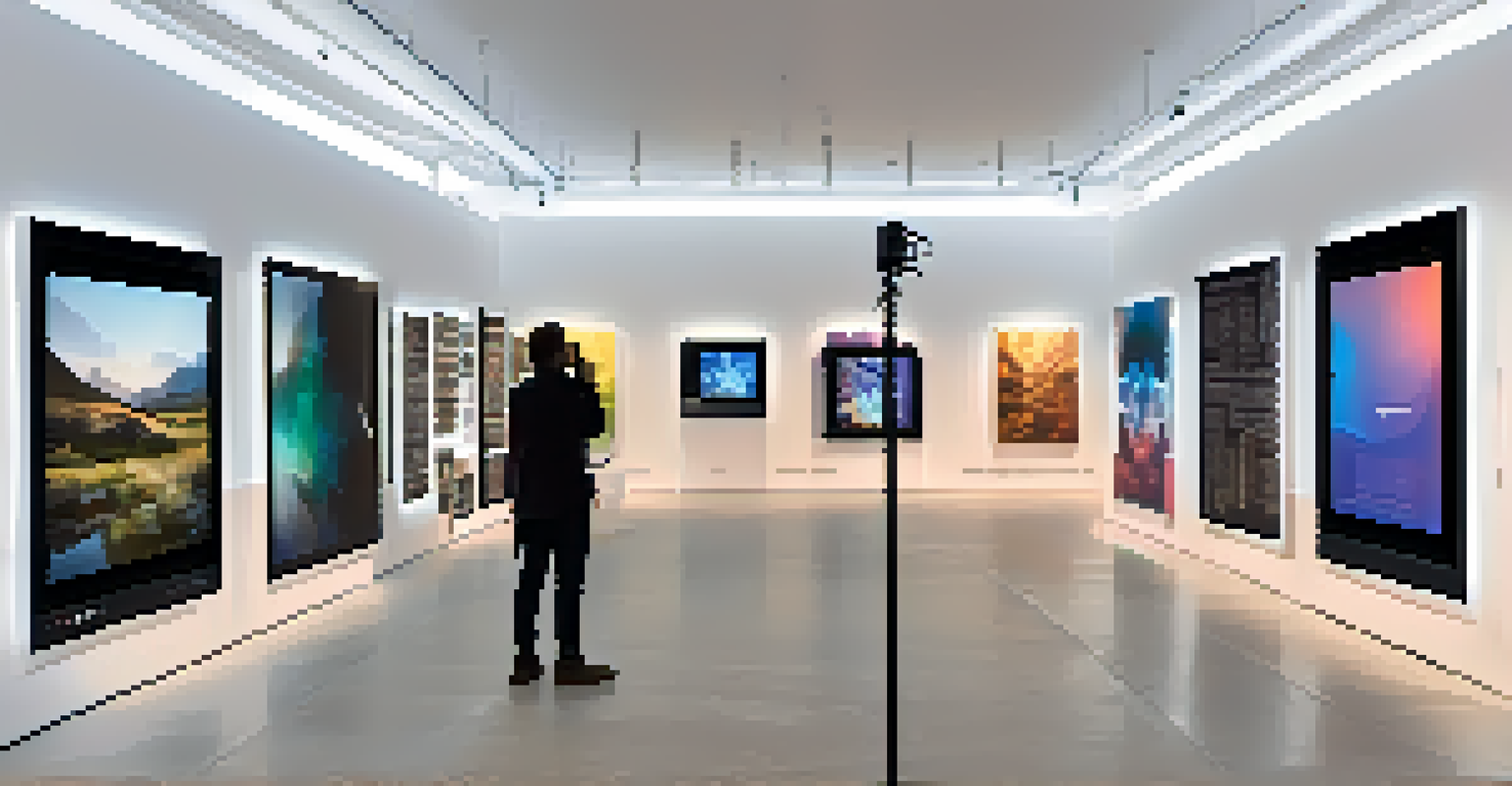Art for Everyone: Community Art Galleries in Brazil

The Role of Community Art Galleries in Brazil
Community art galleries in Brazil play a vital role in promoting local artists and engaging the public. These spaces serve as platforms for creative expression and cultural exchange, fostering a sense of belonging within communities. By showcasing diverse artistic styles and narratives, they reflect the rich tapestry of Brazilian culture.
Art is not what you see, but what you make others see.
In many towns and cities, these galleries are more than just exhibition spaces; they are hubs for collaboration and learning. Workshops, discussions, and events often take place, inviting the community to participate and connect with the artists. This dynamic interaction encourages a deeper appreciation for art and its impact on society.
Moreover, these galleries often focus on marginalized voices, providing opportunities for underrepresented artists to share their work. By prioritizing inclusivity, they challenge the traditional art scene and create a more equitable platform for creativity, making art truly accessible for everyone.
Spotlight on Notable Community Art Galleries
Brazil is home to a variety of community art galleries that showcase the nation’s artistic diversity. One notable example is the Galeria Fortes Vilaça in São Paulo, which emphasizes contemporary local talent while also engaging with international artists. This gallery not only exhibits work but also hosts educational programs that inspire the next generation of creatives.

Another gem is the Casa das Artes in Porto Alegre, which focuses on integrating art into everyday life. The gallery hosts regular exhibitions, workshops, and cultural events that encourage community participation. This approach allows residents to engage with art beyond mere observation, transforming them into active participants in the creative process.
Community Galleries Foster Inclusion
Community art galleries in Brazil prioritize inclusivity by providing accessible spaces and programs for artists and audiences from diverse backgrounds.
In Rio de Janeiro, the Museu de Arte do Rio (MAR) stands out for its commitment to social inclusion. By hosting free exhibitions and educational programs for all ages, MAR aims to break down barriers and foster a love for art, ensuring that everyone has the opportunity to experience and appreciate creativity.
Art as a Tool for Social Change
Art has the power to inspire and provoke thought, and community art galleries in Brazil harness this potential for social change. Many galleries collaborate with local organizations to address pressing social issues through art. By focusing on themes like identity, migration, and environmental concerns, these spaces encourage dialogue and reflection.
The role of the artist is to make the world a better place.
For instance, the work of artists featured in these galleries often reflects the struggles and triumphs of their communities. This connection between art and activism not only raises awareness but also fosters solidarity among individuals facing similar challenges. Viewers are inspired to think critically about their surroundings and the world at large.
Through community-driven projects, galleries create opportunities for artists to engage with their audiences on a deeper level. This relationship empowers both the artists and the community, demonstrating that art can be a powerful vehicle for change and a means of advocating for social justice.
Creating Inclusive Spaces for All
One of the remarkable aspects of community art galleries in Brazil is their commitment to inclusivity. Many of these spaces actively work to ensure that art is accessible to people from all walks of life, regardless of socioeconomic status. By offering free admission and organizing community events, they break down financial barriers to access.
Additionally, galleries often focus on providing programming that caters to diverse audiences, including families, students, and seniors. Workshops, guided tours, and interactive exhibits engage visitors of all ages, fostering a love for art and creativity. This approach helps demystify the art world and encourages participation from those who may feel intimidated by traditional art institutions.
Art as a Catalyst for Social Change
These galleries leverage art to address social issues, encouraging dialogue and solidarity within communities through collaborative projects.
The emphasis on inclusivity also extends to the artists themselves, with many galleries showcasing work from a wide range of cultural backgrounds. By elevating voices that are often marginalized in mainstream art, these galleries create a richer, more diverse artistic landscape that reflects the true essence of Brazilian society.
The Impact of Digital Platforms on Community Art
In recent years, digital platforms have transformed the way community art galleries in Brazil connect with audiences. Many galleries have embraced social media and online exhibitions to reach a wider audience, especially during challenging times like the pandemic. This shift has allowed them to continue showcasing local talent and engaging with the community, even from a distance.
Through virtual tours and live streams of events, galleries can now share their exhibitions with people who might not have been able to visit in person. This accessibility opens up new avenues for interaction and appreciation, allowing audiences to experience art in fresh and innovative ways. It also encourages artists to explore digital mediums and engage with global audiences.
However, while digital platforms provide exciting opportunities, they also present challenges. Galleries must find ways to maintain the personal touch and community connection that define their mission. Balancing online engagement with in-person experiences will be key to preserving the unique charm of community art galleries in Brazil.
Fostering Collaboration Between Artists and Communities
Collaboration is at the heart of many community art galleries in Brazil, bridging the gap between artists and local communities. These galleries often facilitate projects that bring together artists, residents, and organizations to co-create art that reflects their shared experiences. This collaborative spirit fosters a sense of ownership and pride within the community.
For example, public art projects initiated by galleries can transform neighborhoods and spark conversations among residents. Murals and installations that reflect local culture and history can create a visual narrative that celebrates community identity. Such initiatives not only beautify public spaces but also encourage collective engagement and dialogue among diverse groups.
Digital Platforms Expand Reach
The rise of digital platforms has allowed Brazilian community art galleries to connect with wider audiences, enhancing engagement even during challenging times.
Through these collaborative efforts, galleries empower communities to express their stories and aspirations through art. This participatory approach fosters creativity and innovation, ensuring that the art produced resonates deeply with those it represents and strengthens the bonds within the community.
The Future of Community Art in Brazil
As we look ahead, the future of community art galleries in Brazil seems promising. With an increasing emphasis on inclusivity and social engagement, these spaces are likely to continue evolving to meet the needs of their communities. The integration of technology, combined with a commitment to collaboration, will play a crucial role in this evolution.
Moreover, as global interest in Brazilian art grows, community galleries have the opportunity to elevate local artists on the international stage. By expanding their reach and showcasing diverse voices, these galleries can contribute to a more vibrant and interconnected art scene that celebrates Brazil’s unique cultural heritage.

Ultimately, the ongoing support for community art galleries will be essential in nurturing the next generation of artists and art lovers. By fostering creativity, connection, and understanding, these spaces will continue to be instrumental in shaping the cultural landscape of Brazil for years to come.